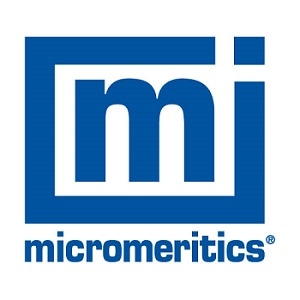Binder materials are responsible for holding the active material particles within the electrode of a lithium-ion battery (LIB) together to maintain a strong connection between the electrode and the contacts. These binding materials are normally inert and have an important role in the manufacturability of the battery.
.jpg)
Image Credit: Janaka Dharmasena/Shutterstock.com
Binders must be flexible, insoluble in the electrolyte, chemically and electrochemically stable and easy to apply to the electrodes. Binders for the positive cathode also need to be resistant to oxidation. A common binder material for the cathode is polyvinylidene fluoride, whereas a common anodic binder material is styrene-butadiene copolymer. As electrode materials advance, binder materials that improve the performance of the new electrode materials are also required.
.jpg)
Figure 1. Properties of the materials used to make lithium-ion batteries (LIBs) are crucial to battery performance
Separators are a class of membranes which allow for the physical separation of the anode and the cathode, allowing the ions within the electrolyte to flow between the two electrodes whilst blocking the electrons to prevent short-circuiting.
By nature, separators are required to be highly porous, a good electronic insulator and a good ionic conductor. They are also commonly made from polymers such as polyolefins, ceramics or polymer/ceramic blends. Separators also act as a safety device within LIBs by stopping the ion flow when a battery is overheating.
The development and advancement of separators and binders have received less attention than electrode material development in LIBs, despite their properties being a crucial factor in the overall performance and safety of the battery. In a previous article, we outlined the important microstructural properties of electrode materials for LIBs and how to analyze them.
This article outlines the analysis of separator and binder material properties and how the properties of these materials can be controlled to optimize battery manufacturability and performance using a range of methods.
.jpg)
Figure 2. Schematic diagram of a lithium ion battery.
Porosity
High porosity is an important and desirable property in LIBs, as it provides a constant ion flow and allows the separator to act as an electrolyte reservoir– this is known to increase the amount of electrolyte held by the separator and provides an increase in the energy density and a reduction of the heat generated within the LIB. However, the porosity can’t be too high, as the pores need to be small enough to close when the battery is overheating, and thus, allowing the separator to act as a safety shutdown. In typical battery system, the LIB separators have a porosity of 40%.
Porosity can be measured using both liquid and gas absorption methods. Micrometrics offers a number of instrument solutions for measuring the porosity of separator materials. These include the AccuPyc 1340, the TriStar II Plus and the AutoPore V which use gas displacement, gas adsorption and mercury displacement methods, respectively, to measure the porosity in the material(s).
Pore Size and Shape
To prevent the particles within the electrodes from entering the separator, the pores of the separator need to be smaller than the size of the particles in the electrodes. As such, separators commonly possess pores on the sub-micron scale. Small and tortuous pores also prevent dendritic lithium penetration. Lithium dendrites are undesirable and are a common cause of short-circuiting within a battery, as their growth can lead to a connection between the electrodes. It is suspected that Samsung Galaxy note 7 fires in 2016 were caused by dendritic lithium growth.
A uniform pore size throughout helps to prevent an uneven ion flow and fluctuations in the current density of the electrode. These can be an issue as they cause parts of the battery to work more than others, causing the lifetime of the battery to be decreased.
Micrometrics offers pore size distribution measurements using mercury porosimetry in the form the AutoPore V (3.6 µm pores) and the TriStar Plus for even smaller pore sizes. Micrometrics also offers the Phenom Pro Scanning SEM as an ideal desktop SEM instrument to measure the size and structure of pores.
Zeta Potential
Zeta potential offers an insight into the amount of electrostatic repulsion between adjacent particles of like charge. In LIBs, the zeta potential measured the affinity between the separator and the electrolyte, as well as the overall stability of the system, with the zeta potential impeding or aiding the flow of the electrolyte the separator. Therefore, zeta potential measurements can be used to understand the transport mechanisms of the separator and tune it to improve the cycle life of the battery. Micrometrics offers the NanoPlus HD to determine the particle size and zeta potential of a wide range of materials with outstanding performance.
Conclusion
Whilst separators and binder materials are commonly used in LIB applications, there is still a great need for further research to increase their performance, increase battery lifetime and reduce costs. Researchers who are developing new materials in this field require equipment that quickly and accurately assesses the relevant material properties, such as the porosity, pore size and shape and zeta potential. Micrometrics possesses a wide-ranging portfolio of instruments to meet these needs and help researchers to optimize their materials and develop the next generation of batteries.
References and Further Reading
- Yoshio M, Brodd RJ, Kozwa A, “Lithium-Ion Batteries: Science and Technologies” Springer, 2009.
- Arora P, Zhang Z, “Battery Separators” Chem. Rev, 104:4419-4462, 2004.
- Zhang SS, “A review on the separators of liquid electrolyte Li-ion batteries” Journal of Power Sources, 164:351-364, 2007.
- http://www.electronicproducts.com/Power_Products/Batteries_and_Fuel_Cells/What_are_dendrites_and_why_do_they_cause_fires_in_lithium_batteries.aspx Accessed August 3rd, 2017.

This information has been sourced, reviewed and adapted from materials provided by Micromeritics Instrument Corporation.
For more information on this source, please visit Micromeritics Instrument Corporation.